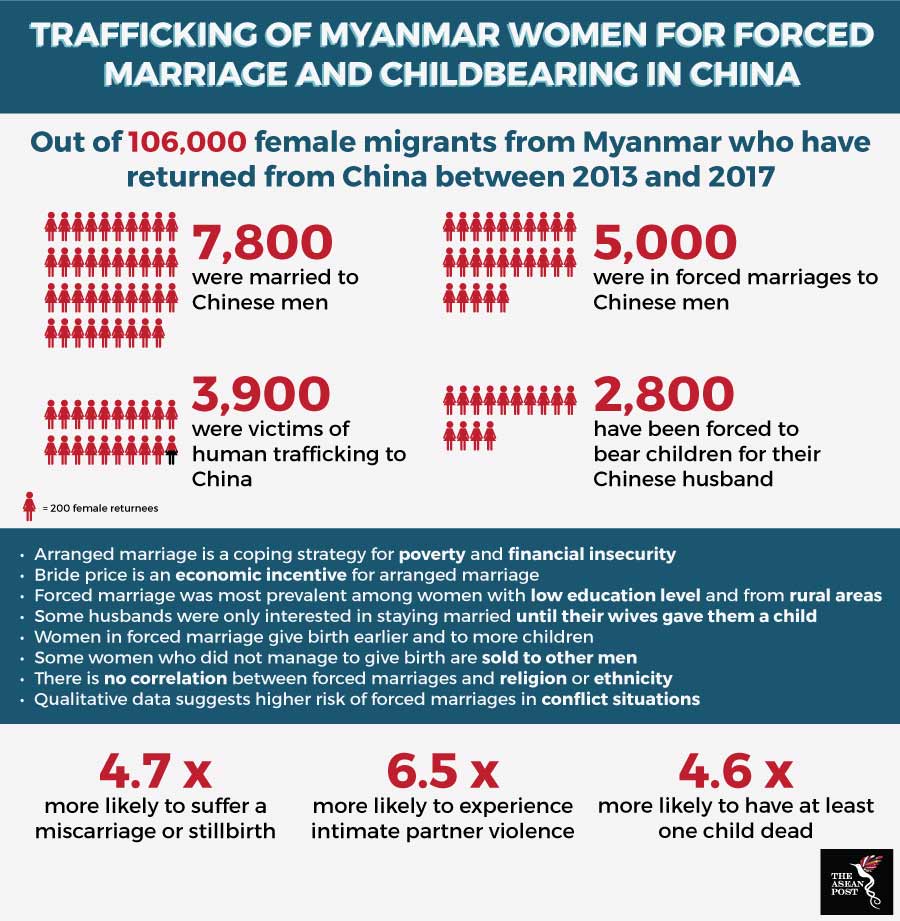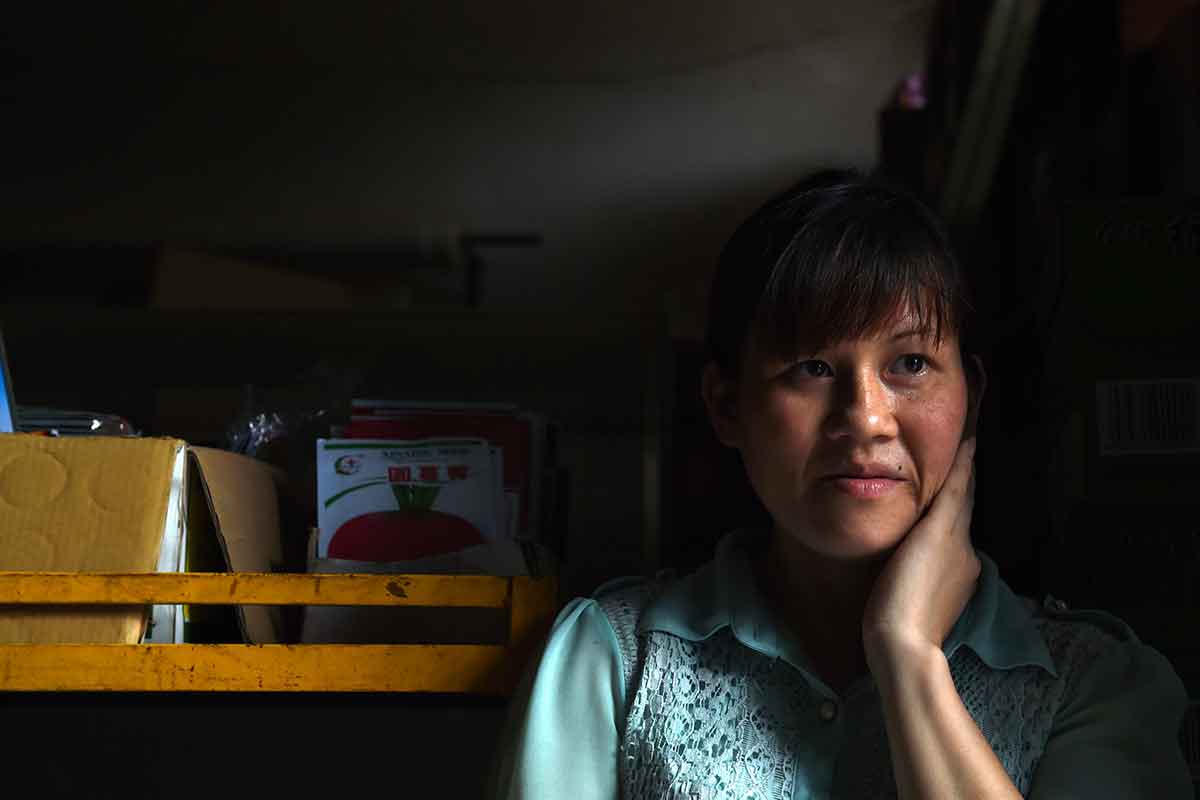Between June 2017 and April 2018, the Johns Hopkins Bloomberg School of Public Health’s Center for Humanitarian Health carried out a study on almost 400 migrant women from Myanmar between the ages of 15 and 55, who were married to Chinese men and experienced childbearing in the five years they were in China.
The study, supported by the Kachin Women’s Association Thailand (KWAT), found that almost 40 percent of them were victims of forced marriages. The study also found that about 33 percent of the respondents could not refuse marriage at the time the union was formed, while about 14 percent were not allowed to leave the marriage without menace or threat of a penalty. Around 30 percent of respondents also reported giving birth to children while in a forced marriage to a Chinese man.
Based on the findings, the study estimated that among the 106,000 female migrants who have returned from China between 2013 and 2017, around 7,800 of the female returnees were married to Chinese men, 5,000 of whom were in forced marriages. This include around 3,900 who have been trafficked into China to be forced into marriages with Chinese men. About 2,800 of the female returnees were estimated to have been forced to bear children for their Chinese husbands.
“Victims of forced marriage suffer a range of rights violations and exposure to physical and psychological risks. This research draws attention to the scope of the problem and to the urgent need for support services for victims,” said the Lead Author of the study, Courtland Robinson, at the launch of the study. Robinson is also an Associate Professor in the Department of International Health at the Bloomberg School.

Source: Johns Hopkins Bloomberg School of Public Health.
Uniquely Southeast Asian
Every year, thousands of women and girls are being trafficked from Southeast Asian countries to China to plug the gaping hole in the country’s demography left by 37 years of the One-Child Policy. The robustly enforced policy, compounded by a cultural preference for male heirs, is blamed for millions of unborn females as a result of sex-selective abortions and female infanticide.
However, the magnitude of bride trafficking in the region is unknown as reliable and recent data has been sporadic or completely missing. While the Johns Hopkins and KWAT study is limited to Kachin State and the Northern Shan State in Myanmar, and Dehong Dai and Jingpo Prefecture in the Chinese Yunnan Province, it is the first systematic effort to quantify the scale of a problem.
This threat is unique to Southeast Asia due to its proximity to and massive shared borders with China. The Chinese Academy of Social Sciences estimates that, as a result of the One-Child Policy, there will be up to 40 million more Chinese men of marrying age compared to Chinese women by 2020. At the peak of the gender disparity in births in 2004, 121 boys were born for every 100 girls in China. This is frightening when compared to the completely natural male-to-female sex ratio of 105 boys to every 100 girls.
Previously, data collected by the United Nations Office on Drugs and Crime (UNODC) on human trafficking found that most human trafficking victims detected in and from Southeast Asia between 2012 and 2014 were female children. According to the UNODC, forced marriages were reported in the Mekong area, Cambodia, China, Myanmar and Vietnam.
Recommendations to governments
In addressing this regional and cross-boundary issue, the study urged governments to beef up on and coordinate anti-trafficking and safe migration policies, training and implementation especially in high risk communities. The government of Myanmar is also urged to regulate and monitor recruitment, migration and marriage agencies, improve local awareness on trafficking and ensure safe repatriation of migrants under threat. The study also urged the Chinese government to allow safe passage for Myanmar nationals to reduce the need to expose themselves to exploitation and human trafficking.
For the victims of human trafficking for the purpose of marriage, life offers them a very bleak future. This include higher risk for multiple health problems and the constant threat of violence. An important and revealing study like this helps to bring the voice of victims to our attention.
Related articles:
Myanmar crisis getting out of hand
